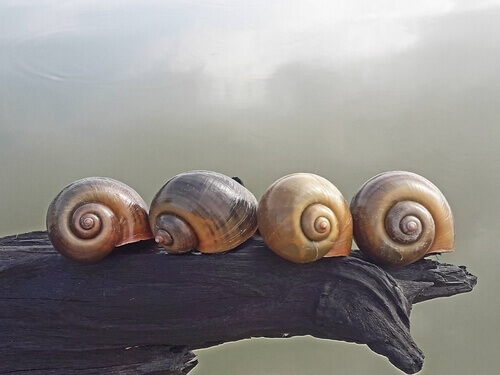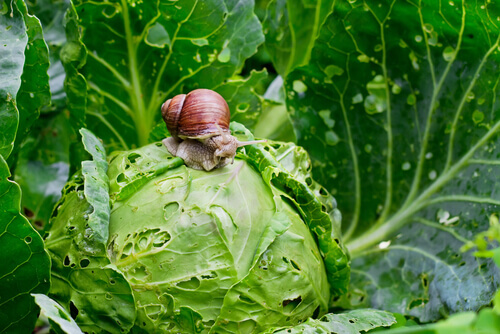The Life of the Snail - Carrying Its House on Its Back

This cute little animal, the protagonist of children’s songs, anecdotes, and stories, has always aroused our curiosity. Could it be because of its particular system of living with its house on its back? Or perhaps because of it living in slow motion? What’s certain is that the life of the snail awakens the interest of children and adults alike.
Getting to know about the snail
Snail is the common name for gastropod mollusks. But, what are the traits of these little animals?
- They’re invertebrates. The group includes thousands of species with different anatomies and behaviors.
- The best known are the terrestrial ones, as they’re the most frequently seen. However, there are numerous marine species.
- Most of them have a spiral shell. This is the “little house” they carry on their backs. When they’re born, this shell is very fragile, but as they grow, it becomes stronger with calcium. The animal secretes the necessary components to make it.
- The lower part of the snail is called the foot. It’s highly muscular and when it contracts it enables the animal to move. Its locomotion is aided by the secretion of a slippery gelatinous substance, which facilitates movement.
The life of the snail
1. Reproduction
- Most snails are hermaphrodites. This means that they produce both male and female reproductive cells. In many cases, it may be necessary for them to mate with each other, because they can’t self-fertilize.
- Spring and summer are the most favorable times for reproduction. They copulate at night, and if fertilization has been effective, eggs will be laid during the following days.
- A snail can lay up to 100 eggs. It buries them in a small hole about 5 cm (2 in) deep in the ground. Land snails usually lay eggs once a month.

2. Development
- Since the snail is only an embryo in the egg, it begins to develop its shell. Normally, hatching occurs between two weeks and one month after laying. Newly hatched snails are small and already have a very small, weak shell on a transparent body.
- They immediately begin to feed. Young snails require a lot of calcium, so they feed on other dead hatchlings and unhatched eggs.
- They grow very rapidly, but very few survive. Snails attract numerous predators that attack mainly the youngest specimens.
- The average life span of snails is between 2 and 5 years in natural conditions. However, in captivity they can live for more than 10 years. With controlled feeding and free of enemies, snails’ life expectancy increases.
3. Hibernation or estivation
Some snail species undergo periods of lethargy – estivation if it’s in summer, and hibernation if it occurs during the winter. Their entire metabolism and vital rhythms slow down.
During these periods they withdraw into their shells. To avoid predator attacks, they close the opening of the shell with a gelatinous layer that they secrete themselves.
The life of the snail: habitat and diet

- Snails are very widespread in the world. They live in diverse habitats: some species have adapted very well to the desert, others live in cold climates, mountainous areas, and even in swamps.
- The most common and well-known snails choose humid places and depend on water for their development. They usually reproduce very well in places where there are human beings. Man’s presence implies gardens, and this provides them with permanent food.
- In the hot season, they hide during the hours with high temperatures. When the sun has gone down and the temperature drops, they come out to feed.
- Most of them are herbivores. They feed on leaves, bark, stems, and decaying organic matter. They have a special organ, the radula, which helps them eat. This organ allows them to get dust from stones to stock up on the calcium needed to strengthen their shells.
- They’re solitary animals and come into contact with others only for feeding or mating purposes. They’re not aggressive to other animals, although they do cause damage to plants.
Finally, snails are used in the food and cosmetics industry nowadays. For this reason, snail farms have been created.
This text is provided for informational purposes only and does not replace consultation with a professional. If in doubt, consult your specialist.